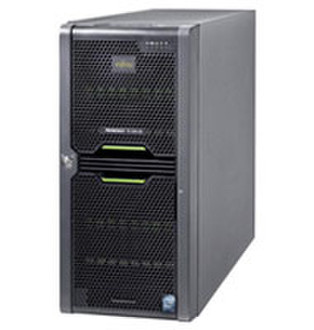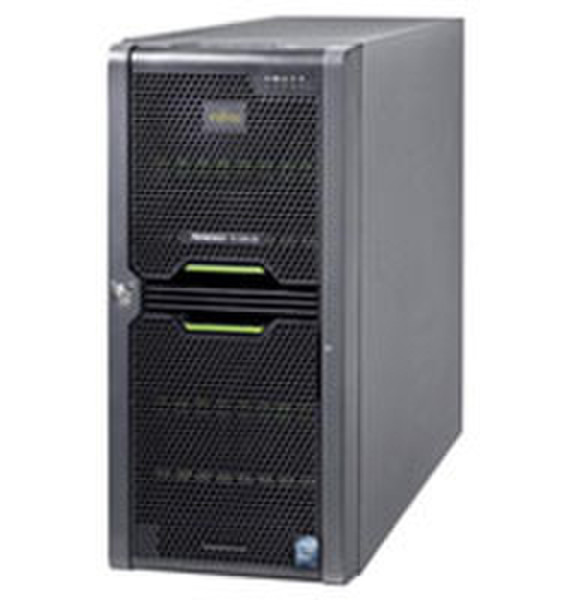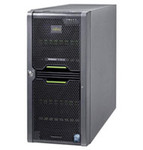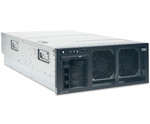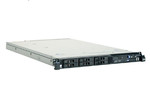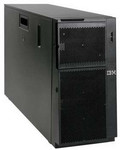Katalog
-
Katalog
- Antiquitäten & Kunst
- Auto & Motorrad: Fahrzeuge
- Business & Industrie
- Bücher
- Büro
- Camping & Outdoor
- Computer & Elektronik
- Essen, Getränke & Tabak
- Fashion & Style
- Feinschmecker
- Foto & Camcorder
- Garten & Terrasse
- Gesundheit & Beauty
- Haus, Bau, Renovierung
- Haushaltsgeräte
- Haustierbedarf
- Heimwerken & Garten
- HiFi & Audio
- Kinder
- Kleidung & Accessoires
- Kraftfahrzeuge & Zubehör
- Medizinische Geräte, Zubehör & Versorgungsmaterialien
- Modellbau
- Musik
- PC- & Videospiele
- Sammeln & Seltenes
- Spielzeug
- Sport & Erholung
- TV, Video, DVD
- Telekommunikation
- Uhren & Schmuck
- Unterhaltung & Hobby
- Waffen & Munition
- Wellness & Beauty
- institutional food services equipment
Filters
Search
Fujitsu PRIMERGY TX200 S6 2.53GHz E5630 700W Turm (5U) Server
MPN: VFY:T2006SF020NL
🚚 Liefern nach:
Lieferung aus:
Deutschland
Verkauf und Lieferung durch:
Wo kaufen und Preise (Werbung *)
nach Oben
Technische Daten
nach Oben
Speichermedien
| Festplatten-Formfaktor | 2.5 " |
|---|---|
| Hot-Swap | Y |
| RAID-Unterstützung | Y |
| Max. Speicherkapazität | 3 TB |
| Gesamtspeicherkapazität | 292 GB |
| Anzahl der installierten Festplatten | 2 |
| Festplatten-Schnittstelle | Serial Attached SCSI (SAS) |
| Festplattenkapazität | 146 GB |
Anschlüsse und Schnittstellen
| Serielle Anschlüsse | 2 |
|---|---|
| Anzahl VGA (D-Sub) Anschlüsse | 1 |
Prozessor Besonderheiten
| Intel® Rapid-Storage-Technik | N |
|---|---|
| Intel® Trusted-Execution-Technik | Y |
| ARK Prozessorerkennung | 47924 |
| Intel® Virtualization Technologie (VT-X) | Y |
| Intel® 64 | Y |
| CPU Konfiguration (max) | 2 |
| Intel® Dual Display Capable Technology | N |
| Intel® Clear Video Technologie | N |
| Intel® vPro™ -Technik | N |
| Intel® VT-x mit Extended Page Tables (EPT) | Y |
| Verbesserte Intel SpeedStep Technologie | Y |
| Intel® Demand Based Switching | Y |
| Intel® Clear Video HD Technology für (Intel® CVT HD) | N |
| Intel® Wireless-Display (Intel® WiDi) | N |
| Intel® FDI-Technik | N |
| Intel® Clear Video Technology für Mobile Internet Devices (Intel® CVT for MID) | N |
| Intel® My-WiFi-Technik (Intel® MWT) | N |
| Intel® Enhanced Halt State | Y |
| Intel® Hyper-Threading-Technik (Intel® HT Technology) | Y |
| Intel® Anti-Theft Technologie (Intel® AT) | N |
| Intel® Virtualisierungstechnik für direkte I/O (VT-d) | Y |
| Intel® Insider™ | N |
| Intel® Quick-Sync-Video-Technik | N |
| Intel® Flex Memory Access | N |
| Intel® Fast Memory Access | N |
| Intel® Turbo-Boost-Technologie | Y |
Prozessor
| Prozessor Boost-Taktung | 2.8 GHz |
|---|---|
| Thermal-Überwachungstechnologien | N |
| Leerlauf Zustände | Y |
| Execute Disable Bit | Y |
| Physical Address Extension (PAE) | 40 bit |
| Prozessor-Code | SLBVB |
| Speicherkanäle, vom Prozessor unterstützt | Triple |
| Durch den Prozessor (max) unterstützte Speicherbandbreite | 25.6 GB/s |
| Speichertaktraten, vom Prozessor unterstützt | 1066, 800 MHz |
| Konfliktloser-Prozessor | N |
| Stepping | B1 |
| Anzahl Prozessorkerne | 4 |
| Maximaler interner Speicher, vom Prozessor unterstützt | 288 GB |
| Prozessor-Taktfrequenz | 2.53 GHz |
| ECC vom Prozessor unterstützt | Y |
| Tcase | 77.6 °C |
| Bus typ | QPI |
| Speichertypen, vom Prozessor unterstützt | DDR3-SDRAM |
| Unterstützte Befehlssätze | SSE4.2 |
| Prozessorbetriebsmodi | 64-bit |
| Eingebettete Optionen verfügbar | N |
| FSB Gleichwertigkeit | N |
| Prozessor Cache Typ | Smart Cache |
| Anzahl der QPI links | 2 |
| Prozessor-Cache | 12 MB |
| Anzahl installierter Prozessoren | 1 |
| Thermal Design Power (TDP) | 80 W |
| CPU-Multiplikator (Bus-/Kernverhältnis) | 19 |
| Prozessor Lithografie | 32 nm |
| Prozessor-Paketgröße | 42.5 mm |
Speicher
| ECC | Y |
|---|---|
| Speichersteckplätze | 12 |
| RAM-Speicher maximal | 96 GB |
| Speichertaktfrequenz | 1333 MHz |
| RAM-Speicher | 8 GB |
| Interner Speichertyp | DDR3-SDRAM |
Erweiterungssteckplätze
| PCI-Express x8-Slots | 2 |
|---|
Energie
| Anzahl von Stromversorgungseinheiten | 1 |
|---|---|
| Stromversorgung | 700 W |
Weitere Spezifikationen
| Mac-Kompatibilität | N |
|---|---|
| Ventilator | 2 |
Netzwerk
| Netzwerkfunktionen | Gigabit Ethernet |
|---|
Zertifikate
| Konformität mit Industriestandards | IEEE 802.3, IEEE 802.3u, IEEE 802.3ab |
|---|
Design
| Gehäusetyp | Tower (5U) |
|---|---|
| Optisches Laufwerk - Typ | DVD Super Multi |
Zusätzlich
| System-Bus | 5.86 GT/s |
|---|---|
| Eingebauter Ethernet-Anschluss | Y |
| Intel® AES New Instructions (Intel® AES-NI) | Y |
| Motherboard Chipsatz | Intel 5500 |
| InTru™-3D-Technik | N |
| Anzahl Ethernet-LAN-Anschlüsse (RJ-45) | 3 |
Fujitsu Primergy TX200 S6, PRIMERGY. Prozessor-Taktfrequenz: 2,53 GHz, Prozessorfamilie: Intel® Xeon® 5000er-Prozessoren, Prozessor: E5630. Gesamtspeicherkapazität: 292 GB, Festplatten-Formfaktor: 2.5 Zoll, Festplatten-Schnittstelle: Serial Attached SCSI (SAS). RAM-Speicher: 8 GB, Interner Speichertyp: DDR3-SDRAM, RAM-Speicher maximal: 96 GB. Netzwerkfunktionen: Gigabit Ethernet. Kompatible Betriebssysteme: Windows Server 2008 R2/2008/2003 Novell SUSE Linux Enterprise Server Red Hat Enterprise Linux vMware
Ähnliche Angebote
nach Oben
-
Zahlungsarten
Wir akzeptieren:


